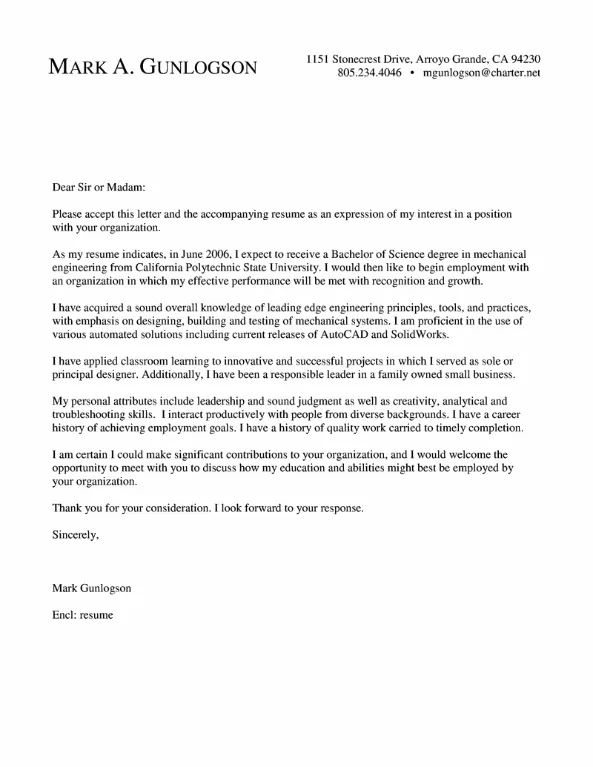Understanding the Importance of a Mechanical Engineer Cover Letter
A well-crafted cover letter is your first impression on a potential employer and serves as a crucial tool in securing a mechanical engineering position. In a competitive job market, it is essential to stand out, and a cover letter offers the opportunity to present yourself beyond the facts and figures listed in your resume. It allows you to articulate your passion for mechanical engineering, highlight relevant skills, and demonstrate how your qualifications align with the specific requirements of the job. A strong cover letter can significantly increase your chances of getting an interview and ultimately, landing your dream job. Failing to create a compelling cover letter could mean your application is overlooked, so investing time in this document is a worthwhile endeavor. This guide will help you create a cover letter that stands out from the competition.
Why a Cover Letter Matters
A cover letter matters because it provides context to your resume, showcasing your personality, communication skills, and career aspirations. It’s an opportunity to explain gaps in your employment history, elaborate on specific projects, and demonstrate your understanding of the company and the role. The cover letter allows you to tailor your application to the specific job, which shows that you’re truly interested in the position and have taken the time to understand the requirements. Many employers consider the cover letter as an indicator of your writing skills and attention to detail. A well-written cover letter is a testament to your professionalism and can significantly influence the hiring manager’s first impression of you. The cover letter helps in establishing a personal connection with the hiring manager, increasing the likelihood of your application standing out among many others.
Key Elements of a Compelling Cover Letter
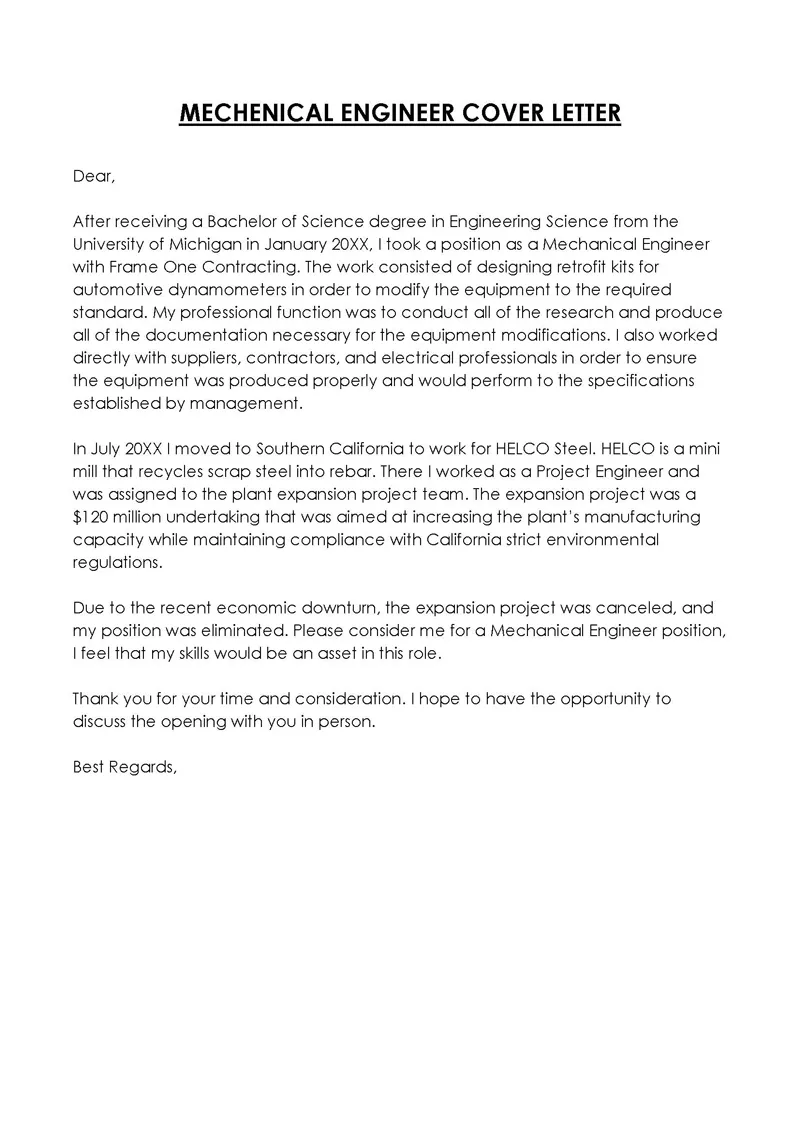
A compelling cover letter should consist of key elements that grab the reader’s attention and highlight your qualifications. These include a professional header with contact information, a personalized greeting to the hiring manager, and a compelling opening paragraph that captures their interest. You should provide a clear and concise explanation of your relevant skills, experience, and accomplishments. Always highlight how your background aligns with the job requirements. The letter should express your enthusiasm for the role and the company. A call to action, such as requesting an interview, along with a professional closing and signature are also essential. Attention to detail is crucial, and a well-structured, error-free cover letter is key to a good impression. Including quantifiable achievements with numbers is also a plus point to your cover letter to make it more impressive.
Structuring Your Mechanical Engineer Cover Letter
The structure of your cover letter is as important as the content. A well-organized cover letter should follow a clear format that is easy to read and understand. This typically includes a header, a greeting, an opening paragraph, a body section that highlights your skills and experience, a section expressing your enthusiasm, a closing paragraph with a call to action, and a professional closing. Keeping each section concise, while providing comprehensive information, is important. The structure should flow logically, leading the reader through your qualifications and interests. Formatting your cover letter for readability, with appropriate use of white space, bullet points (where appropriate), and clear paragraph breaks, is key. By paying attention to the structure, you make it easier for the hiring manager to grasp your qualifications and appreciate your value as a potential employee.
Header and Contact Information
The header of your mechanical engineer cover letter is the first thing the hiring manager sees, so it should be professional and easy to read. Include your full name, address, phone number, and email address. Ensure that your email address is professional and not something casual. This information allows the hiring manager to easily contact you. Consider using a simple, clean font for the header and make sure the layout is organized. In addition to your contact information, you can include the date and the company’s contact information, if known. Double-check the accuracy of all contact details to prevent any communication issues. The header sets the tone for your letter and reflects your attention to detail and professionalism. This is your first chance to showcase your organization skills and establish credibility.
Greeting and Salutation
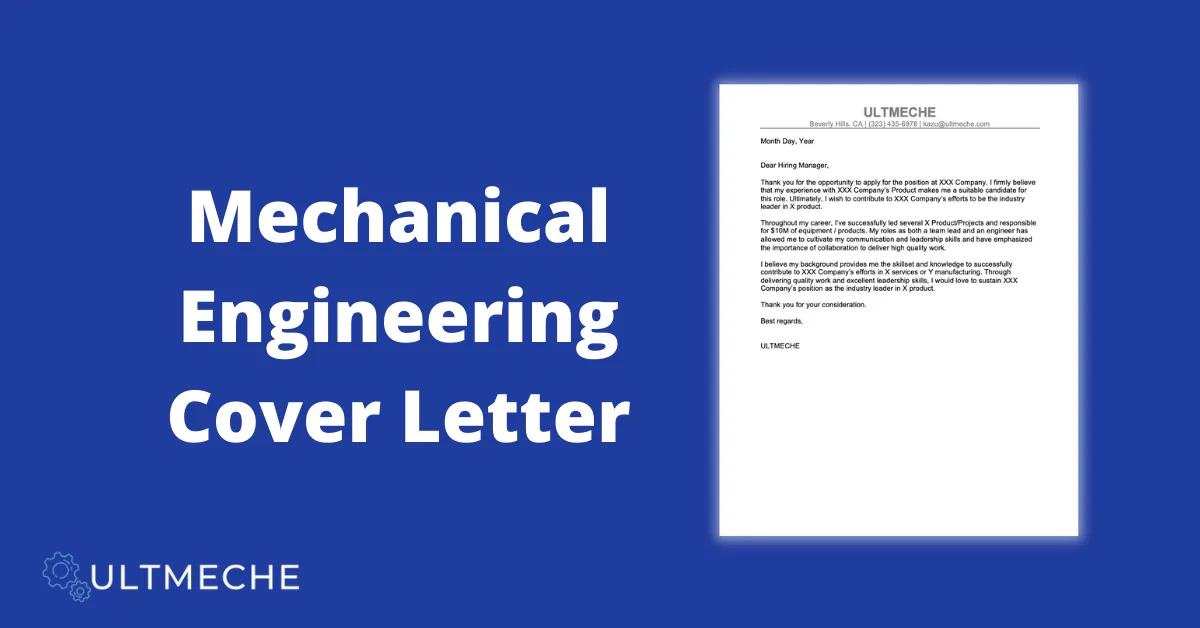
A personalized greeting is a crucial aspect of your cover letter, demonstrating that you’ve taken the time to research the company and the hiring manager. Use the hiring manager’s name, if possible. If you cannot find a specific name, try to address the letter to the hiring team or the title of the person responsible for hiring. Avoid generic greetings such as ‘To Whom It May Concern’. Addressing the letter to a specific person shows that you have invested time in your application and are truly interested in the opportunity. This personal touch creates a connection and makes your application more memorable. Double-check the spelling and accuracy of the name to avoid any negative impressions. This small step can make a big difference in the overall impression you make.
Opening Paragraph Grab Attention
The opening paragraph of your mechanical engineer cover letter should immediately capture the hiring manager’s attention and convey your enthusiasm for the role. Start with a strong statement that highlights your interest in the position and the company. Briefly mention your key qualifications and how they align with the job requirements. You can mention a specific project or achievement that demonstrates your skills. Be concise and to the point, setting the stage for the rest of the letter. Consider the first sentence your ‘hook’, designed to draw the reader in. Tailor this paragraph to each specific job application, demonstrating that you have carefully reviewed the job description and understand the company’s needs. Avoid generic opening lines; instead, aim for something that is both compelling and unique to make a lasting impression.
Highlighting Your Skills and Experience
The body of your cover letter should be used to highlight your relevant skills and experience as a mechanical engineer. Focus on how your qualifications match the job requirements and provide specific examples to support your claims. Use keywords from the job description to show your understanding of the role. Clearly articulate your technical skills, project experience, and any quantifiable achievements. Provide concise and detailed explanations of the projects you have worked on, emphasizing your contributions and the results achieved. Tailor this section to match the specific needs of the company and the role. Make sure the information is presented in a way that is easy to understand and relevant to the reader. This section will be the core of your cover letter, so make sure to emphasize your strengths and how they align with the company’s needs.
Technical Skills for Mechanical Engineers
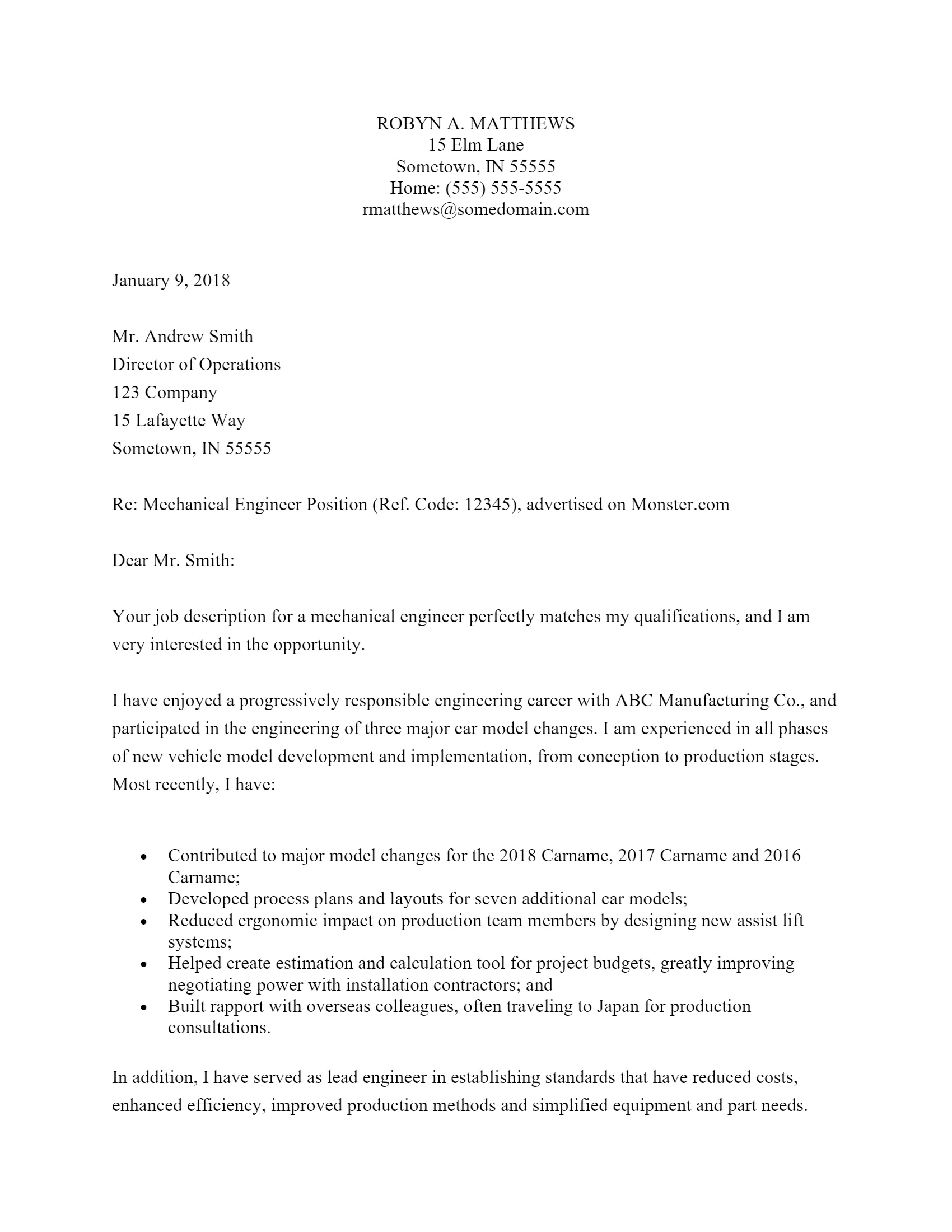
Detailing your technical skills is essential in your mechanical engineer cover letter. List relevant skills such as CAD software proficiency (e.g., AutoCAD, SolidWorks), knowledge of thermodynamics, fluid mechanics, and materials science. Mention your experience with simulation and analysis tools (e.g., FEA, CFD). Demonstrate your familiarity with design principles, manufacturing processes, and quality control. Provide specific examples of projects where you’ve utilized these skills to achieve successful outcomes. Quantify your skills whenever possible, such as the number of designs you’ve created or the percentage of efficiency improvements you’ve implemented. By highlighting these skills, you show your technical expertise and your ability to contribute to the company’s goals. Focus on the skills that are most relevant to the specific job requirements.
Project Experience
Highlighting your project experience is crucial. Describe the projects you have worked on, emphasizing your role, responsibilities, and the outcomes achieved. Provide specific examples of how you contributed to the projects, and quantify your achievements whenever possible. Discuss the engineering challenges you faced and how you overcame them. Use action verbs to describe your tasks and responsibilities, such as ‘designed,’ ‘developed,’ ‘managed,’ or ‘implemented.’ Focus on projects that align with the job requirements and demonstrate your ability to apply your skills in real-world scenarios. Include the project’s timeline, and the technologies and tools used. Showing your project experience helps you demonstrate your practical application of skills and your ability to deliver results. This section can provide the hiring manager with confidence in your abilities.
Quantifiable Achievements
Quantifying your achievements makes your cover letter more impactful. Instead of just stating what you did, quantify your contributions with numbers and data. For example, mention that you ‘reduced production costs by 15%’ or ‘improved efficiency by 20%’. Use metrics to demonstrate the impact of your work, showing specific results and outcomes. If you have experience with projects, include the results and show improvements. Whenever possible, use percentages, numbers, and specific figures to highlight your achievements. This helps provide concrete proof of your abilities. Quantifiable achievements make your cover letter more credible and help the hiring manager see the value you can bring to their team.
Demonstrating Your Passion
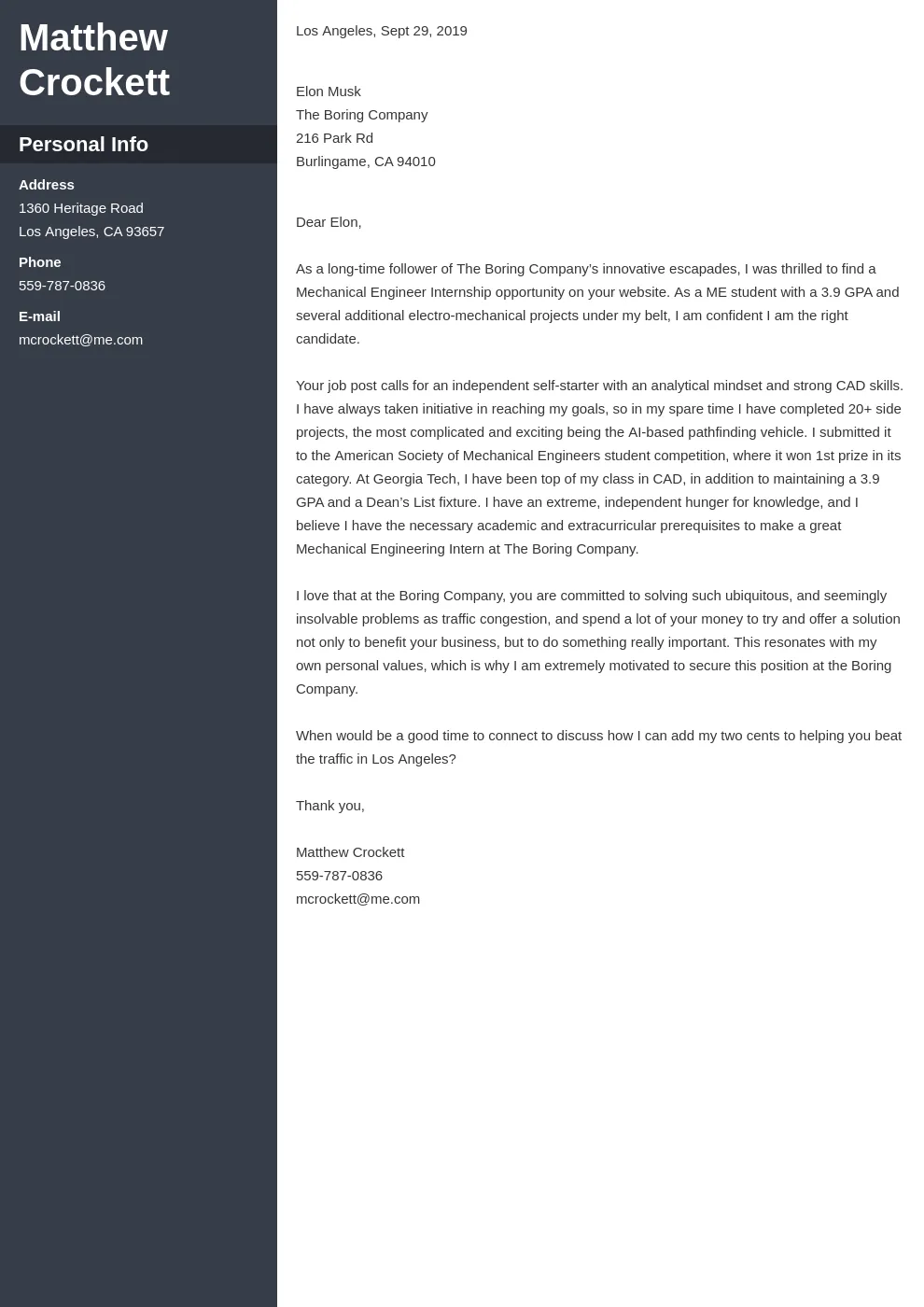
Expressing your passion for mechanical engineering is crucial. Show your enthusiasm for the field and your genuine interest in the role and the company. This adds a personal touch that can set you apart. Describe what motivates you in your career and why you chose this specific field. Demonstrate your passion through your words and tone. Show your understanding of the company’s mission and values, and explain why you want to contribute to their success. Your passion helps convince the hiring manager that you are dedicated and committed. This section can make a significant impact and make your cover letter more memorable and appealing.
Expressing Your Enthusiasm for the Role
Expressing your enthusiasm for the specific role is essential. Highlight how your skills and experience align with the job requirements and what makes this position particularly appealing to you. Explain what interests you about the work and why you are excited about the opportunity. Show that you understand the responsibilities of the role and are eager to contribute. Mention any specific projects or tasks that you find particularly exciting. This section demonstrates your understanding of the job and your eagerness to contribute to the team. Being specific shows the hiring manager that you have taken the time to carefully consider the position. Be genuine in your expression of enthusiasm.
Researching the Company
Before writing your cover letter, conduct thorough research on the company. Learn about their mission, values, products, and recent projects. This demonstrates your genuine interest in the company and shows that you have taken the time to learn about them. Tailor your cover letter to align with the company’s specific goals and values. Mention any recent achievements or news about the company to show that you are informed. Understanding the company will give you the edge over others. Researching the company gives you the chance to demonstrate to the hiring manager that you are invested in working for them. This research demonstrates to the hiring manager that you have put in the time and effort to understand the organization.
Closing the Letter
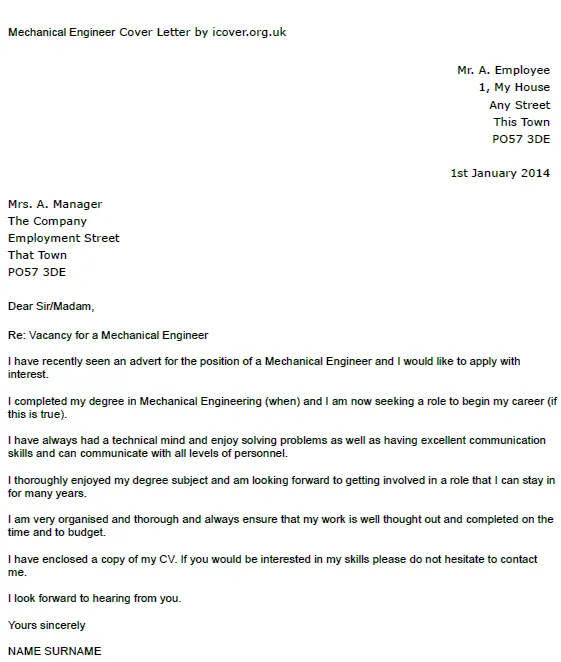
Your closing paragraph is your final opportunity to make a strong impression. Keep it concise and professional. It should reiterate your interest in the position, summarize your key qualifications, and thank the hiring manager for their time and consideration. Provide a clear call to action to encourage the hiring manager to contact you for an interview. Always proofread your closing paragraph for any errors. The closing paragraph should leave the hiring manager with a positive impression of you and your potential. It reinforces your enthusiasm and makes it easier for them to take the next step in the hiring process.
Call to Action
Include a clear call to action in your closing paragraph. This is the part where you explicitly tell the hiring manager what you want them to do next. Request an interview to discuss your qualifications further. Make it easy for the hiring manager to contact you by providing your contact information. Make sure your request is polite and professional. This directs the hiring manager’s next steps and increases the likelihood of a positive response. A strong call to action is one of the most important aspects of a cover letter.
Professional Closing and Signature
End your cover letter with a professional closing and signature. Use a formal closing such as ‘Sincerely’, ‘Respectfully’, or ‘Best regards’. Ensure that your signature is clearly visible if you are submitting a physical copy of your letter. If submitting electronically, your typed name will suffice. Always proofread your closing and signature to ensure that everything is correct. This is a final opportunity to project professionalism. It reinforces your attention to detail and leaves a positive impression.
